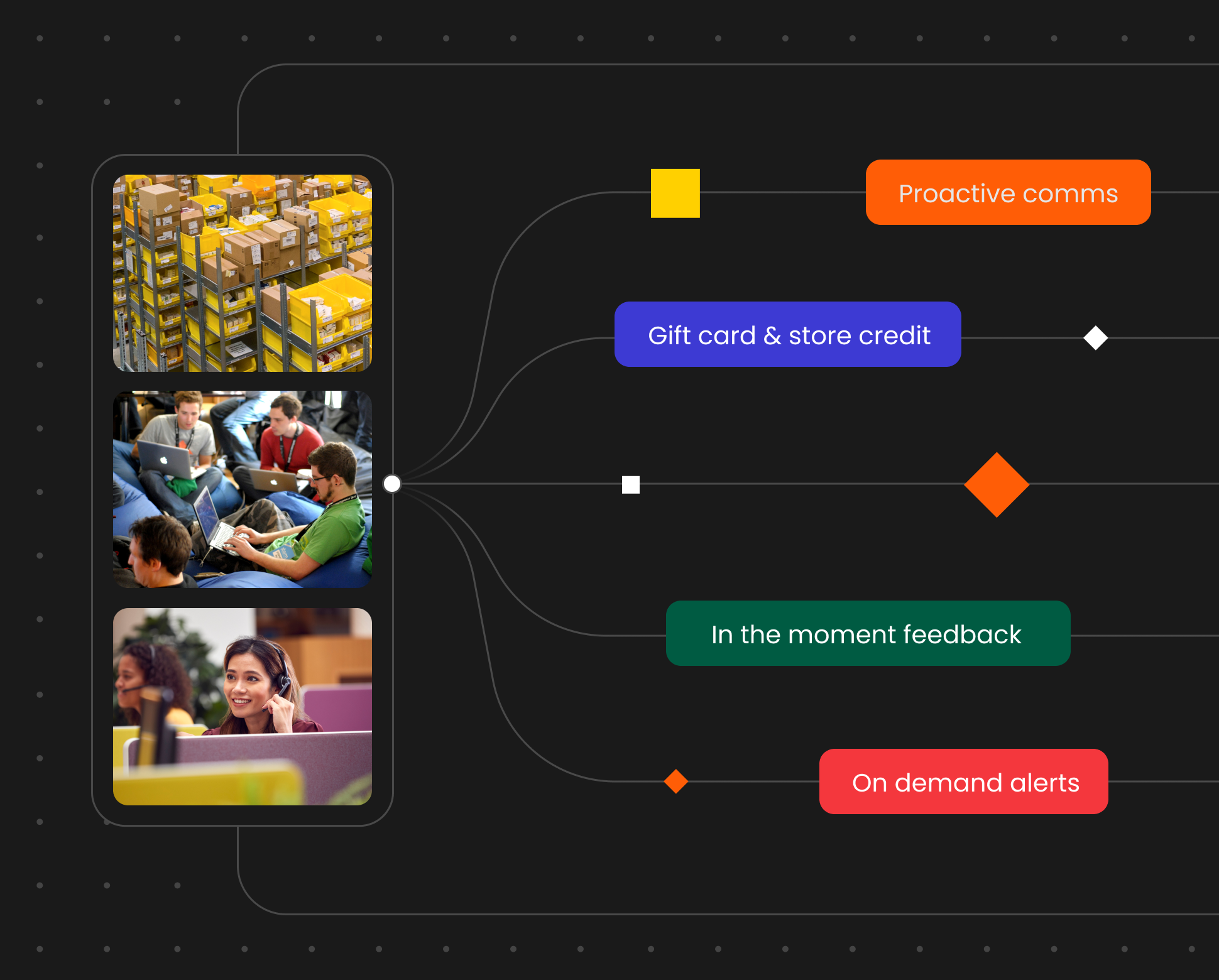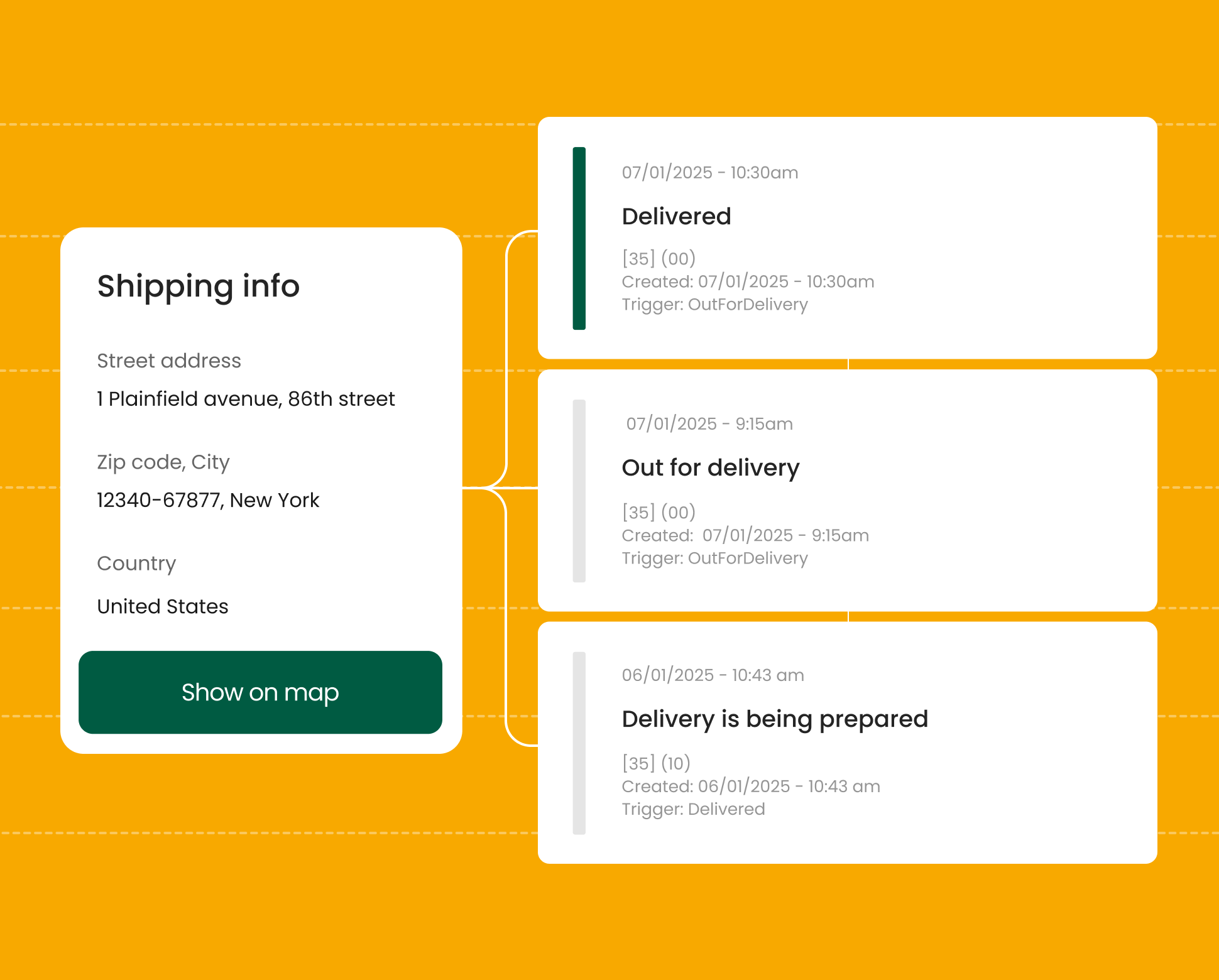What Is Post-Purchase Upselling?
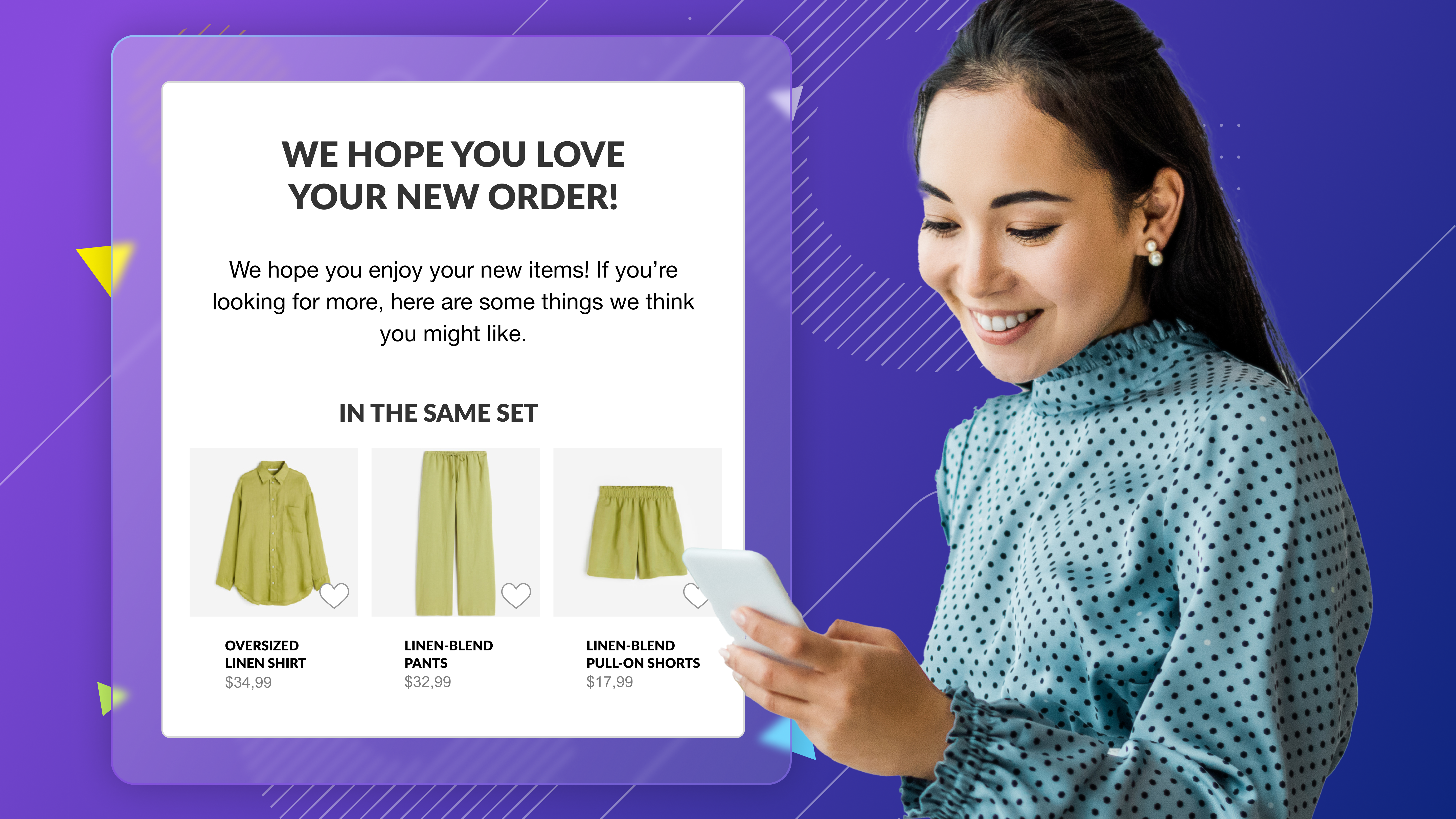
Contents
The potential of post-purchase upselling in ecommerce is staggering. Giants like Amazon have already witnessed remarkable growth by adopting this strategy.
Sucharita Kodali, Vice President and Principal Analyst at Forrester Research, revealed that 10-30% of ecommerce revenue is generated from upselling and cross-selling. No wonder this tactic has proven to be a game-changer for many business owners.
The idea is pretty simple. These customers have already put their trust in your brand. All you now need to do is take their journey further.
In this article, we’ll delve into the depths of post-purchase upselling and show you how to transform your ecommerce business into a powerhouse of profitability while delighting your customers.
Ecommerce upselling: The basics
Upselling, in the ecommerce context, refers to offering customers certain upgrades or additional products that may complement their original purchases. Emails, pop-ups, and push notifications can act as cues to encourage customers to buy more.
For example, if a customer is looking at a smartphone at your online store, you can recommend a higher-end model that has greater storage capacity and more advanced camera features. Or, if they are buying a camera, you can suggest a bundle that includes additional lenses, a tripod, and a camera bag.
The whole idea is to increase the average order value (AOV) and generate more revenue overall by offering upsells that genuinely add value and align with the customer’s needs and preferences. Doing so will not only help to increase your revenue but also enhance customer satisfaction and loyalty.
Upselling vs cross-selling
Many times the terms upselling and cross-selling are used interchangeably. However, there is some distinction between the two.
When you’re upselling, you would typically recommend more expensive, better versions, or higher volumes of the same products to your customers. Essentially, you’re encouraging them to upgrade their orders and spend more with you.
When you go to the H&M store online and look at this women’s crop top, for example, you’ll notice a section on the page called “Others also bought” which offers more recommendations for similar products—some of which may be priced higher than the one you’re considering. That’s upselling.

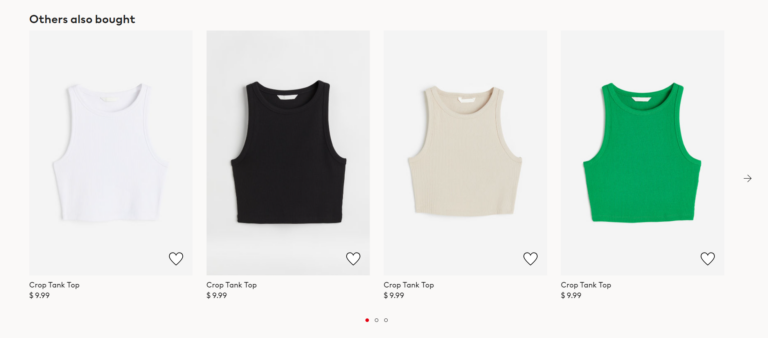
Cross-selling, on the other hand, is when you recommend some complementary items to go with their original purchase. For example, on the same H&M product page mentioned above, you’ll notice a section called “Style with” which offers recommendations for clothing that may complement the top you’re considering. The idea is to recommend products that add value to the original purchase.
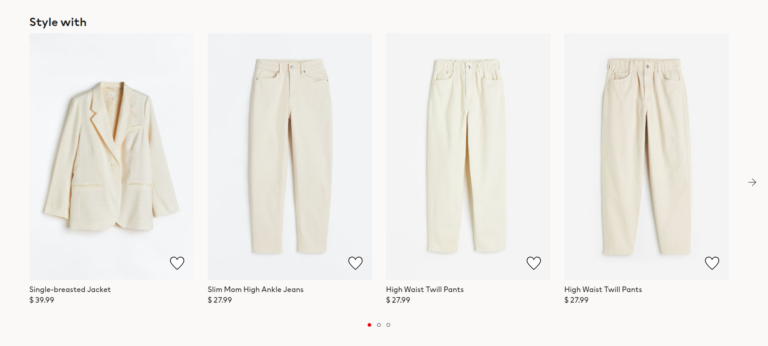
So, while the two tactics may appear to be similar, there is a fundamental difference in how they work. Upselling prompts the customer to buy a higher-tier product in the same line, while cross-selling techniques push them to buy horizontally.
Benefits of upselling
Upselling offers several benefits for your ecommerce business. Here are the most notable ones:
- Boosts revenue. Upselling helps you increase the average order value, thereby generating more sales. This is also great from a cost point of view as you’re able to sell more without any additional marketing efforts.
- Improves conversion rates. By offering additional, relevant, and complementary products to your customers, you’re essentially making their lives better. You’re also giving them a better shopping experience and, therefore, giving yourself a better chance of conversion.
- Builds great customer relationships. Finally, by showcasing the ability to understand your customers better, you can build great customer relationships that will last for years.
Key considerations for successful upselling
While upselling has its advantages, keep the following tips in mind to make this strategy even more impactful.
1. Ensure the offer is useful and relevant. Only a relevant offer will give you the desired results. For example, a customer who has added a suit to their cart might be interested in buying a tie, cufflinks, or a pocket square to go along with it. By promoting a relevant add-on, you can expect greater possibilities of purchase.
2. Create a sense of urgency. Convey to your customers that the offer won’t be valid forever and instill some urgency in the deal. Use catchphrases like “Offer valid only today” or place a ticking timer that displays a countdown for the offer.
3. Time your cues right. The timing and placement of upselling offers are crucial. Present the cue at the right moment, such as during the checkout process or immediately after the purchase, when customers are already engaged and receptive. Ensure the upsell is prominently displayed and easily accessible without being intrusive.
Defining post-purchase upselling
| Traditional upselling | Post-purchase upselling |
|---|---|
| Occurs before or during the point when a purchase decision is made | Occurs, after the purchase is complete |
| Implemented in-store or on product and checkout pages | Implemented via post-purchase communications such as order notifications or branded tracking pages |
Post-purchase upselling in the ecommerce context refers to the practice of offering additional products, upgrades, or services to a customer after they have made a purchase.
Unlike traditional upselling, which occurs before the purchase decision is made, post-purchase upselling takes place after the customer has already committed to buying a product.
Post-purchase upselling is typically done through targeted recommendations via email or even on a . To be effective, offers must align with the customer’s purchase history, preferences, or the specific product they have just bought.
For example, uses parcelLab’s to send automated shipping updates, delay notifications, etc. as well as personalized product recommendations with the goal of upselling products that may complement the items the customer just bought.
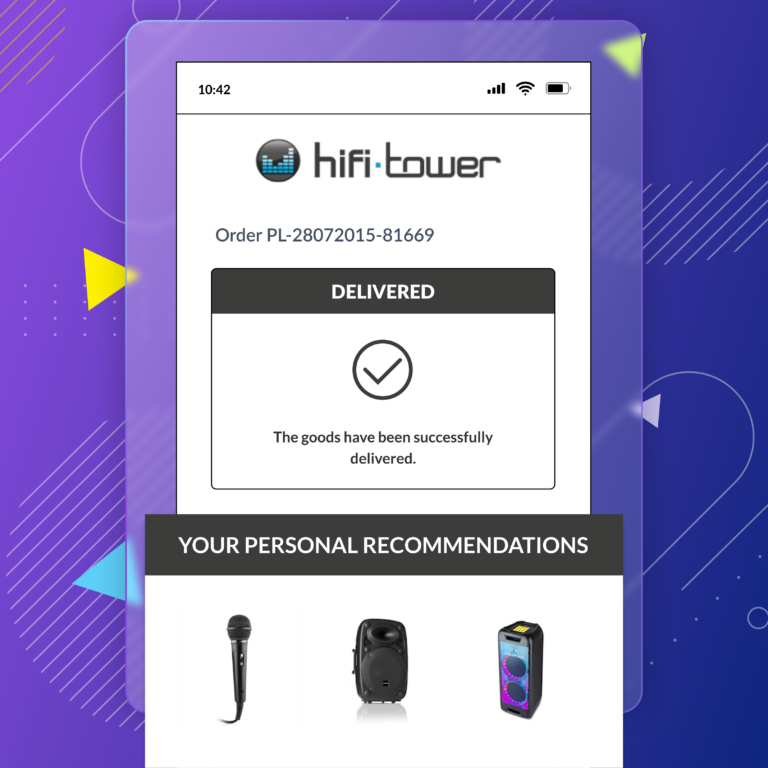
The goal is to provide additional value, enhance the customer’s experience, and potentially increase the overall transaction value. Remember that upselling is often used as an umbrella term to include techniques like cross-selling and bundling as well.
Best upselling strategies and tactics
Upselling can pay rich dividends if you employ the right tactics. Here are some of the most effective upselling methods you may leverage for your ecommerce business.
1. Bundling complementary products or services
You can employ upselling by offering customers the option to purchase a bundle of related products at a discounted price. This is done masterfully by brands like Dollar Shave Club. They offer customers shave butter, cartridges, razors, etc. in a bundle along with their original purchase.
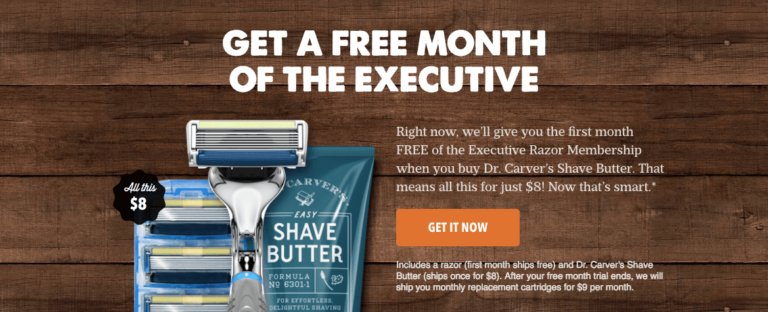
2. Offering upgrades or premium versions
Another effective post-purchase upselling strategy is to offer customers the opportunity to upgrade to a premium or extended version of the product they have purchased. The more value you can showcase in these premium options, the greater will be your chances of conversion to higher tiers.
For example, ProFlowers allows its customers to choose from five different bouquet sizes (while cleverly selecting the second-lowest option automatically) to increase their chances of upselling.
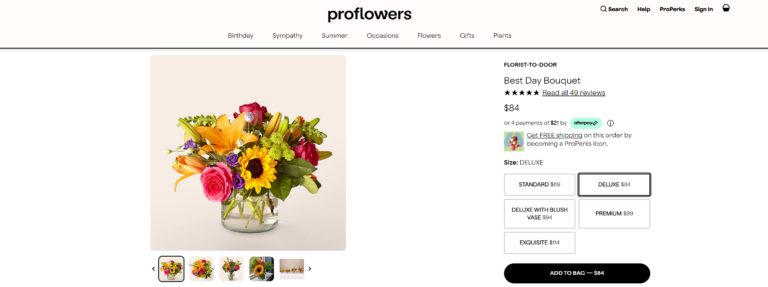
3. Sending personalized recommendations
Utilize data-driven algorithms to offer personalized product recommendations based on the customer’s browsing and purchase history. This can include items frequently bought together or items that complement their previous purchases.
For example, women’s fashion retailer uses parcelLab to send relevant and personalized touchpoints all through its post-purchase communications. Not only do these emails include shipping and delivery updates but also personalized product recommendations for the customer.
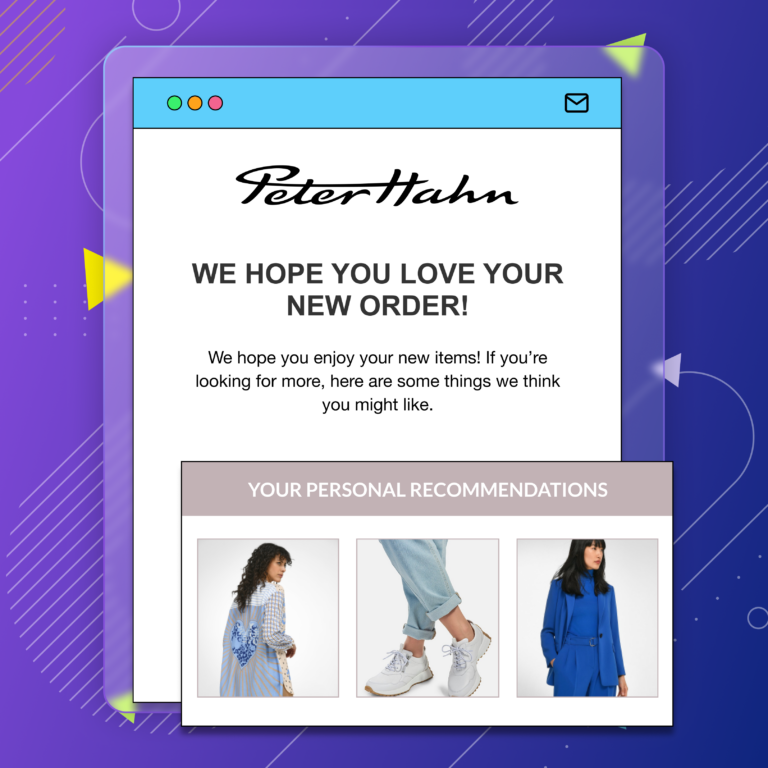
4. Providing limited-time promotions and discounts
Make sure your customers understand that they can’t avail of these offers later or separately. By providing a limited-time discount you create a sense of urgency that drives conversions.
Chubbies, for example, offers a discount on the following product if a customer buys two quantities of it. What’s more, customers may be eligible for free shipping if they place their orders within a certain predefined time limit. Considering that extra costs like shipping is the #1 reason why shoppers abandon their carts, this can be a powerful incentive.
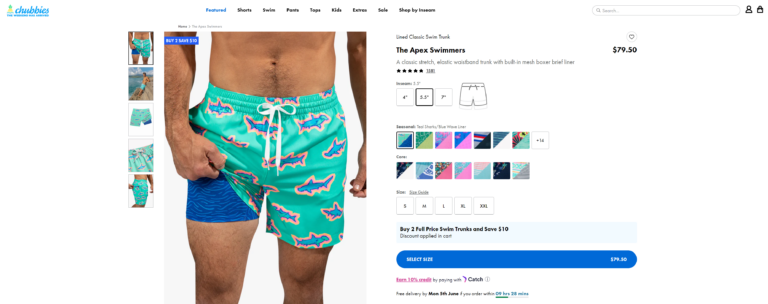
5. Using social proof and customer testimonials
Social proof (customer reviews and ratings) is a great way to drive conversions via upselling. By sharing what others are saying about your products or services, you can gain the customer’s trust and give them a gentle nudge toward the upsell.
This is commonly used by ecommerce giants like Amazon to encourage customers to buy the more expensive product (that has superb reviews). Here’s an example from Home Depot aiming to upsell products using a comparison table that displays product ratings.

Boosting average order value through upselling
There are several ways you can give your customers a reason to spend more at your online store. The following tactics can help you achieve this:
- Redirect to an upselling page. Rather than directing your customers to a plain “thank you” or order confirmation page, you can direct them to an upselling page. This has to have an impactful call-to-action, such as “Buy an extra pack at 20% off.”
- Offer free shipping. Keep a minimum threshold for order values above which customers may automatically qualify for free shipping. Sometimes the trade-off between buying an extra product to avoid paying shipping fees can be worthwhile for customers.
- Do your homework on product use. Take an analytical approach and ask some fundamental questions before choosing an upselling strategy. Why do customers buy a certain product? How do they use them? How can their usage experience be enhanced? Think from the customers’ point of view and then reverse engineer your packages, bundles, and higher-tier products.
- Use your email flows wisely. Don’t be too pushy in your post-purchase emails but make sure you don’t miss the bus either. Rather than spamming the customer with too many unnecessary emails, plug in your promo message within the same mail. Something simple like this can work: “Thank you for buying your GAP shirt from us. We think you might like teaming it with these Levi Strauss jeans.”
- Build trust. Probably the most important bit of psyche behind upselling is whether your customers trust you. Build trust using third-party reviews and ratings, or by ensuring responsive and personalized communication.
What is personalized upselling?
Personalized upselling simply refers to creating cues that are tailor-made for a particular customer as opposed to creating standard offers for all.
With plenty of data available about your customers’ past behaviors, demographics, and preferences, personalized upselling can be highly effective. As such, 86% of consumers say that personalization impacts what they buy at least to some extent.
Upselling beyond the initial purchase
Once the initial purchase has taken place, you can continue sending marketing communication to customers through email. This will enable you to stay top-of-mind even if customers don’t take immediate action after getting your emails.
Keep the customer informed about seasonal discounts, end-of-season sales, contests, and events. Targeted newsletters are another great way to keep your customer abreast of what’s new with your brand.
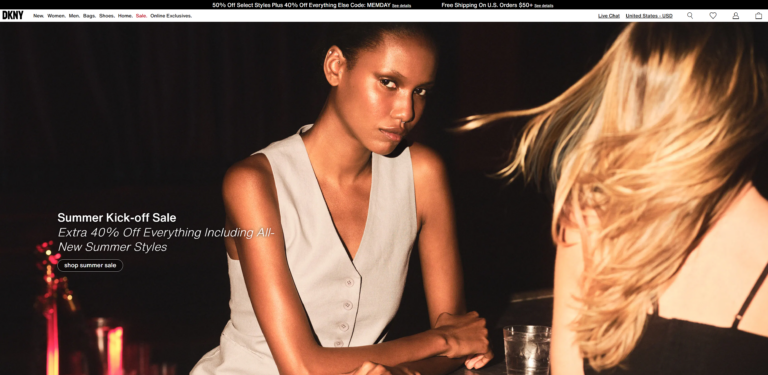
Measuring and analyzing upselling success
Several metrics can tell you whether your upselling effort was a success or not:
- Average order value. This is simply the total revenue divided by the number of orders. A soaring average order value indicates more upselling.
- Customer response rates and conversion rates. The number of upsell page visitors who have made a purchase reflects how well you’ve been able to convert your customers.
- Customer feedback and satisfaction. Reviews and ratings of customers on your platform or other online forums are other great indicators of your upselling success.
Final words
If you’re running an ecommerce business, you simply can’t afford to ignore the power of upselling. Not only is it highly effective in driving revenue growth, but it’s also a low-cost and convenient marketing strategy.
Follow the tips and tricks mentioned above to capitalize on the customer’s purchase momentum and enhance their overall shopping experience, leading to greater revenue and customer satisfaction.

